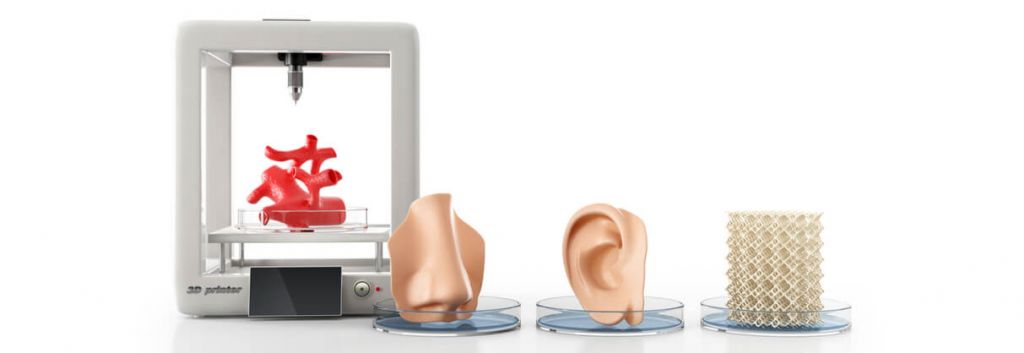Newsletter Signup - Under Article / In Page
"*" indicates required fields
Scientists at the University of Twente have managed to 3D print structures with living cells, which could boost the field of tissue engineering.
Researchers at the University of Twente in the Netherlands have used a technique called ‘in-air microfluidics’ to 3D print structures that contain living cells. The work, which was published in Science Advances, allows the rapid production of ‘micro building blocks’, which could be a massive boost to the tissue engineering field and the repair of damaged tissue. This research has given rise to the spin out, IamFluidics, which will continue to develop and hopefully commercialize the technology.
Tissue engineering combines cells with engineered materials and suitable chemical factors to produce tissues. The aim is to assemble functional constructs that restore, maintain, or improve damaged tissues or whole organs. The field is often associated with regenerative medicine, which would see engineered materials combined with stem cells to generate the desired cell type. Tissue engineering has already given rise to FDA approved artificial skin and cartilage but their use is limited in human patients.
The Dutch group’s approach makes use of microfluidics, which is used for lab-on-a-chip technology, to manipulate tiny drops of fluid. The researchers wanted to use this technology to produce their 3D structure but the speed at which cells leave the chip was too slow, meaning it would take 17 hours to produce a structure with a size of 1 cubic centimeter.
This drove the group to look at using jets to speed up the process. They built two jets that were able to safely move fluids 100 to 1,000 times faster than in a microchip. Not only did this mean that the time taken to build a structure was reduced down to around 2 minutes, but by choosing specific combinations of fluids that react, new materials could be generated upon collision.
The researchers used this technique to build 3D structures with a similar internal structure to that of natural tissue that could be filled with cells and fluid. Their approach offers a promising alternative to current 3D printing techniques that tend to use heat or UV light, which damage living cells.
Tissue engineering has the potential to treat a wide range of diseases as dysfunctional or damaged tissues and organs could be replaced. The Ospedale Niguarda Ca’ Granda in Milan treated a diabetic man with a tissue-engineered islet transplant, which allowed the patient to stop insulin therapy, while researchers from the Universidad Carlos III de Madrid have developed BioDan, a 3D printer that can produce functional human skin. Meanwhile, engineers at Imperial College London refined a technique to produce biomaterials that better mimic the physical properties of organs in the body.
At Labiotech, we will keep an eye out for the emergence of IamFluidics. Fingers crossed that its technology can contribute to the fields of tissue engineering and regenerative medicine finally meeting their potential.
Media – Iaremenko Sergii / shutterstock.com; University of Twente






